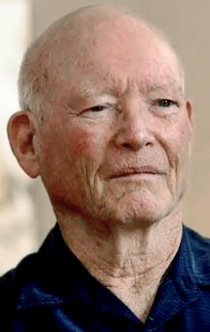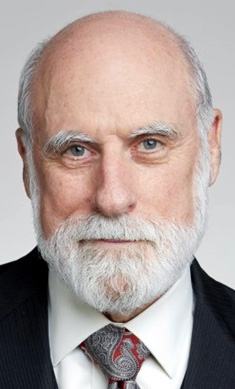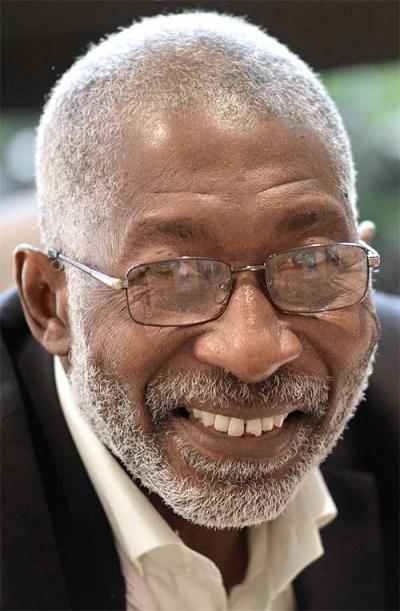

 Matt Serlin is the former Chair of the ICANN Registrar's Constituency and is currently a member of the Expedited Policy Development Process (EPDP) team on the Temporary Specification for gTLD Registration Data. For the past several months, Matt has met at least 2 times each week with members of EPDP team. As a reminder, the EPDP team is comprised of 31 individuals representing various groups within the ICANN community...
Matt Serlin is the former Chair of the ICANN Registrar's Constituency and is currently a member of the Expedited Policy Development Process (EPDP) team on the Temporary Specification for gTLD Registration Data. For the past several months, Matt has met at least 2 times each week with members of EPDP team. As a reminder, the EPDP team is comprised of 31 individuals representing various groups within the ICANN community...
 In 1998, I was a lawyer working at Jones Day in Los Angeles, specializing in patent lawsuits. Specifically, I was a member of Jones Day's Technology Issues Practice, which sought to assist companies becoming involved in computer and communications technologies, including the Internet. Meanwhile, in early May the Internet Assigned Numbers Authority (IANA) was preparing to transition its home base from the University of Southern California's Information Sciences Institute (ISI) to a new, independent and not-for-profit organization.
In 1998, I was a lawyer working at Jones Day in Los Angeles, specializing in patent lawsuits. Specifically, I was a member of Jones Day's Technology Issues Practice, which sought to assist companies becoming involved in computer and communications technologies, including the Internet. Meanwhile, in early May the Internet Assigned Numbers Authority (IANA) was preparing to transition its home base from the University of Southern California's Information Sciences Institute (ISI) to a new, independent and not-for-profit organization.
Essentially everyone in the computing field has heard how the creation of ICANN absolutely changed the development of the Internet and the organization of the Domain Name System (DNS). Consequently, the growth of ICANN promoted the deliberation about New Internet Trends. The blog is structured as an interview with Eugenio Triana who was one of ICANN's nine initial directors in October 1998.
 Back in February 2017, I published the article "Next gTLD Round -- A Seven Year Itch" on CircleID advocating for the Board, ICANN Community, and ICANN org to reach a common understanding of what needed to be accomplished in order to identify a date to open the next application window for new gTLDs. In the past 18 months, there has been considerable movement toward the goal of opening the next application window for new gTLDs.
Back in February 2017, I published the article "Next gTLD Round -- A Seven Year Itch" on CircleID advocating for the Board, ICANN Community, and ICANN org to reach a common understanding of what needed to be accomplished in order to identify a date to open the next application window for new gTLDs. In the past 18 months, there has been considerable movement toward the goal of opening the next application window for new gTLDs.
 In ICANN's earliest days, it had very few friends, or so it seemed to the initial Board members. There were none of the compliments and congratulations that normally accompany the creation of a new corporation. There was great hesitancy among potential donors over the fact that we did not yet have (and would not have for nine long months), a federal tax exemption number. There was also a poisonous open Board meeting in December 1998 in Cambridge, Massachusetts...
In ICANN's earliest days, it had very few friends, or so it seemed to the initial Board members. There were none of the compliments and congratulations that normally accompany the creation of a new corporation. There was great hesitancy among potential donors over the fact that we did not yet have (and would not have for nine long months), a federal tax exemption number. There was also a poisonous open Board meeting in December 1998 in Cambridge, Massachusetts...
 Are you ready? Are your systems prepared so that DNS will keep functioning for your networks? One week from today, on Thursday, October 11, 2018, at 16:00 UTC ICANN will change the cryptographic key that is at the center of the DNS security system - what we call DNSSEC. The current key has been in place since July 15, 2010. This is a long-planned replacement.
Are you ready? Are your systems prepared so that DNS will keep functioning for your networks? One week from today, on Thursday, October 11, 2018, at 16:00 UTC ICANN will change the cryptographic key that is at the center of the DNS security system - what we call DNSSEC. The current key has been in place since July 15, 2010. This is a long-planned replacement.
 It is remarkable? - ?for all the wrong reasons? - ?that only two months remain before the National Telecommunications and Information Administration (NTIA) must make a fateful decision on how it will address its' long-standing Cooperative Agreement with Verisign? - ?the private-sector corporation that edits the authoritative address book of the Internet's Domain Name System (DNS), maintains two of the DNS root servers, and operates the .com and .net registries of the Internet, undoubtedly one of the most lucrative concessions ever granted.
It is remarkable? - ?for all the wrong reasons? - ?that only two months remain before the National Telecommunications and Information Administration (NTIA) must make a fateful decision on how it will address its' long-standing Cooperative Agreement with Verisign? - ?the private-sector corporation that edits the authoritative address book of the Internet's Domain Name System (DNS), maintains two of the DNS root servers, and operates the .com and .net registries of the Internet, undoubtedly one of the most lucrative concessions ever granted.
 In the fall of 1998, I was present at the first meeting of the ICANN Board which was then made up of very senior, prominent parties from a broad spectrum of sources. Much to her credit, Esther Dyson accepted the position as the first Chair of the ICANN Board for the newly birthed organization. I was in attendance in support of the nomination of Michael Roberts as the first ICANN CEO. It was a time of uncertainty.
In the fall of 1998, I was present at the first meeting of the ICANN Board which was then made up of very senior, prominent parties from a broad spectrum of sources. Much to her credit, Esther Dyson accepted the position as the first Chair of the ICANN Board for the newly birthed organization. I was in attendance in support of the nomination of Michael Roberts as the first ICANN CEO. It was a time of uncertainty.
 In the discussions proceeding the World Intellectual Property Organization (WIPO) publishing The Management Of Internet Names And Addresses: Intellectual Property Issues (Final Report, April 30, 1999) that ultimately led to the ICANN implementing the Uniform Domain Name Dispute Resolution Policy (UDRP) (1999) commentators considered three remedies to combat cybersquatting: suspending, cancelling, and transferring infringing domain names.
In the discussions proceeding the World Intellectual Property Organization (WIPO) publishing The Management Of Internet Names And Addresses: Intellectual Property Issues (Final Report, April 30, 1999) that ultimately led to the ICANN implementing the Uniform Domain Name Dispute Resolution Policy (UDRP) (1999) commentators considered three remedies to combat cybersquatting: suspending, cancelling, and transferring infringing domain names.
 In 1998 the idea of "Newco," ICANN's informal predecessor name, was dreamlike. It was so new, so unprecedented, that it was constantly being referred to as an "experiment." It was not every day that one came across an organization conceived by one nation (e.g., the U.S.), that was available for globally shared ownership. One that was defined, in large part, by international participation.
In 1998 the idea of "Newco," ICANN's informal predecessor name, was dreamlike. It was so new, so unprecedented, that it was constantly being referred to as an "experiment." It was not every day that one came across an organization conceived by one nation (e.g., the U.S.), that was available for globally shared ownership. One that was defined, in large part, by international participation.